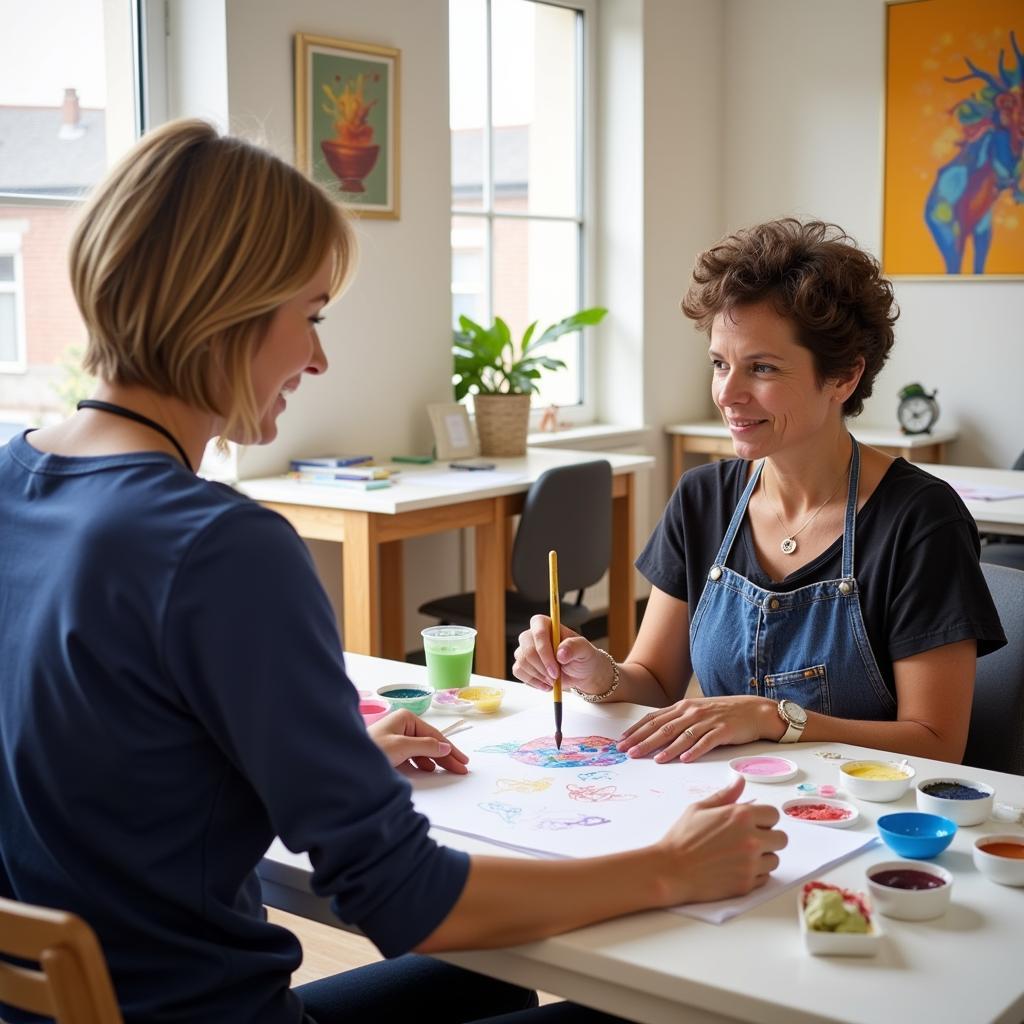Art therapy has become an increasingly common topic in IELTS Writing Task 2, appearing in various forms over the past few years. Studies from the role of art in mental health therapy suggest that this theme is likely to remain relevant in future tests, particularly given its growing importance in healthcare settings worldwide.

Let’s examine a recent IELTS Task 2 question on this topic:
Some people believe that art therapy is an effective treatment for mental health issues, while others think traditional medical treatments are more reliable. Discuss both views and give your opinion.
Analysis of the Question
- Topic: Art therapy vs traditional medical treatments for mental health
- Task: Discussion + Opinion
- Key elements: Effectiveness of both treatment approaches
- Required: Balanced discussion and clear position
Sample Essay 1 (Band 8.5)
In recent years, role of art therapy in treating mental health disorders has gained significant attention. While some advocate for its therapeutic benefits, others maintain that conventional medical treatments remain superior. In my view, both approaches have merit and can be most effective when used complementarily.
Those who support art therapy argue that it provides a unique avenue for emotional expression and healing. Through activities like painting, sculpture, or music, patients can communicate complex feelings that may be difficult to verbalize. Furthermore, creative engagement stimulates neurological pathways that can reduce stress and anxiety, as demonstrated by numerous clinical studies. The non-invasive nature of art therapy also makes it particularly appealing to those who are hesitant about traditional medical interventions.
Conversely, proponents of conventional medical treatments emphasize their scientific foundation and proven track record. These treatments, including medication and structured psychotherapy, have undergone rigorous clinical trials and demonstrate measurable outcomes. They argue that mental health conditions often have biological components that require medical intervention, which art therapy alone cannot address. Additionally, traditional treatments typically follow standardized protocols, making their results more predictable and replicable.
In my opinion, the most effective approach to mental health treatment lies in combining both methodologies. Similar to how impact of music therapy on patient recovery has shown promising results when integrated with conventional treatments, art therapy can serve as a valuable complement to traditional medical approaches. This integrated approach allows patients to benefit from both the evidence-based stability of conventional treatments and the expressive, healing qualities of artistic engagement.
Sample Essay 2 (Band 6.5)
Many people have different ideas about treating mental health problems. Some think art therapy is good, while others prefer traditional medical treatments. I will discuss both sides and give my opinion.
Art therapy can help people feel better. When people draw or paint, they can show their feelings without using words. This is especially good for people who find it hard to talk about their problems. Also, making art can make people feel relaxed and happy. Some studies show that art activities can reduce stress.
However, traditional medical treatments are also important. Doctors use medicines and therapy that have been tested many times. These treatments can help with serious mental health problems. Many people believe that medical treatments work better because they are based on science. Doctors can also measure how well these treatments work.
I think both art therapy and medical treatments are useful. Sometimes, using both together can help patients get better faster. For example, a person could take medicine and also do art therapy to feel better. This way, they get help from both types of treatment.
Analysis of Band Scores
Band 8.5 Essay:
- Task Response: Comprehensively addresses all parts of the task
- Coherence and Cohesion: Logical organization with clear progression
- Lexical Resource: Sophisticated vocabulary with natural and precise usage
- Grammar: Wide range of complex structures used accurately
Band 6.5 Essay:
- Task Response: Addresses the task but with less depth
- Coherence and Cohesion: Basic organization with some progression
- Lexical Resource: Adequate vocabulary but less sophisticated
- Grammar: Mix of simple and complex sentences with some errors
Key Vocabulary
- therapeutic (adj) /ˌθerəˈpjuːtɪk/ – having a healing or curative effect
- complementary (adj) /ˌkɒmplɪˈmentəri/ – combining in such a way as to enhance
- neurological (adj) /ˌnjʊərəˈlɒdʒɪkəl/ – relating to the nervous system
- rigorous (adj) /ˈrɪɡərəs/ – extremely thorough and careful
- replicable (adj) /ˈreplɪkəbl/ – capable of being duplicated or reproduced
Consider practicing with this related prompt: “To what extent can creative activities like importance of journaling for mental health contribute to mental wellness?” Share your practice essays in the comments for feedback and discussion.